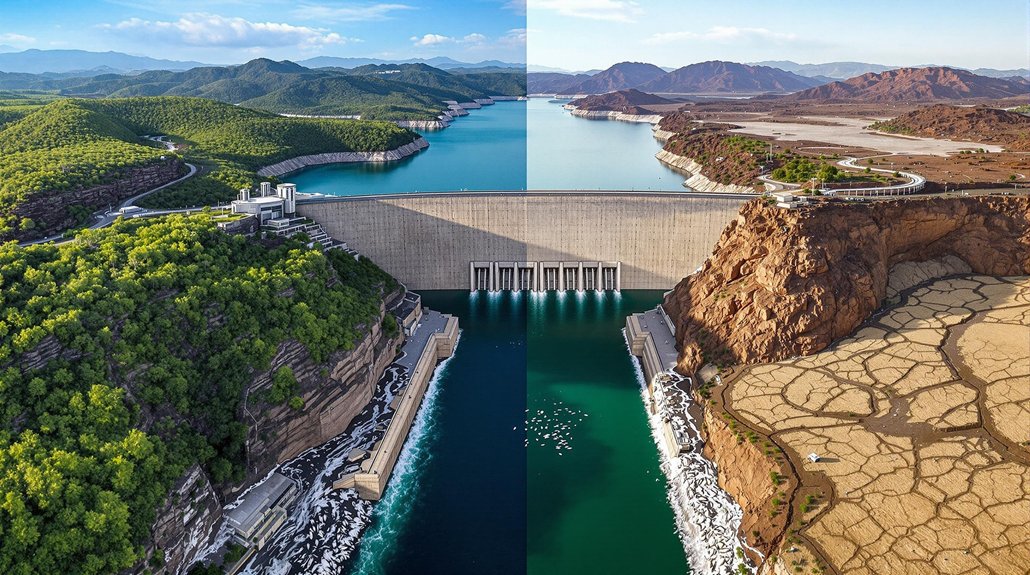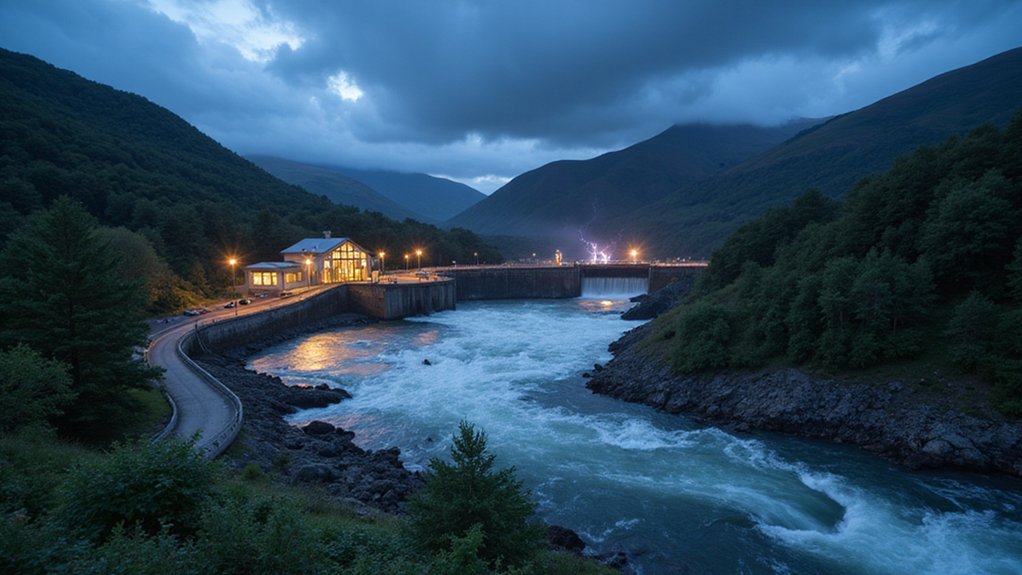Hydropower presents a classic environmental dilemma. It generates clean electricity without direct air pollution and offers flood control benefits. Yet dams block fish migration, disrupt ecosystems, and sometimes emit methane from rotting vegetation. The $2 trillion industry displaces communities while creating recreational opportunities. Engineers have developed fish ladders and less disruptive technologies, but these remain band-aid solutions. The tension between renewable energy needs and ecological preservation isn’t going away anytime soon.
Few energy sources split public opinion quite like hydropower. It’s the golden child of renewable energy—producing a whopping 31.5% of U.S. renewable electricity without direct air pollutants. No smoke. No smog. Just water doing what water does: flow downhill. Brilliant, right? Well, depends who you ask.
Behind those massive concrete walls lurks a darker reality. Dams fundamentally rewire rivers. They block fish from swimming upstream to spawn. Seriously. Imagine hitting a concrete wall on your way home to have babies. Not ideal. Water temperatures change, sediment gets trapped, and entire ecosystems go haywire. Plus, all that vegetation rotting in reservoirs? It’s pumping out methane. So much for “clean” energy.
Dams: where river highways become concrete dead ends for creatures just trying to get home
Communities get flooded out too. Important archeological sites are often permanently submerged by reservoirs. Since the 1950s, we’ve spent $2 trillion globally on dam construction, often at the expense of people who’ve lived along rivers for generations. Sorry about your ancestral home—we needed more electricity!
But let’s be fair. These concrete behemoths offer real perks. They control floods, irrigate crops, and create lakes where people water-ski on weekends. They also provide on-demand power with up to 90% efficiency, helping balance out those finicky solar panels and wind turbines when the sun hides or the air stills. During droughts, multipurpose dams serve as crucial infrastructure by capturing water during high precipitation periods and releasing it when needed most.
Engineers aren’t giving up. Fish ladders, elevators, and aerating turbines aim to minimize damage. Run-of-river systems try to be less disruptive. It’s like putting a Band-Aid on a broken arm, but it’s something. Despite challenges, the industry prevents burning 22 billion gallons of oil annually, highlighting the significant fossil fuel offset.
The future’s complicated. Europe alone has over 21,000 plants with thousands more planned—many in protected areas. Yikes. We’re stuck between our growing appetite for clean electricity and the reality that “clean” isn’t always so clean.








